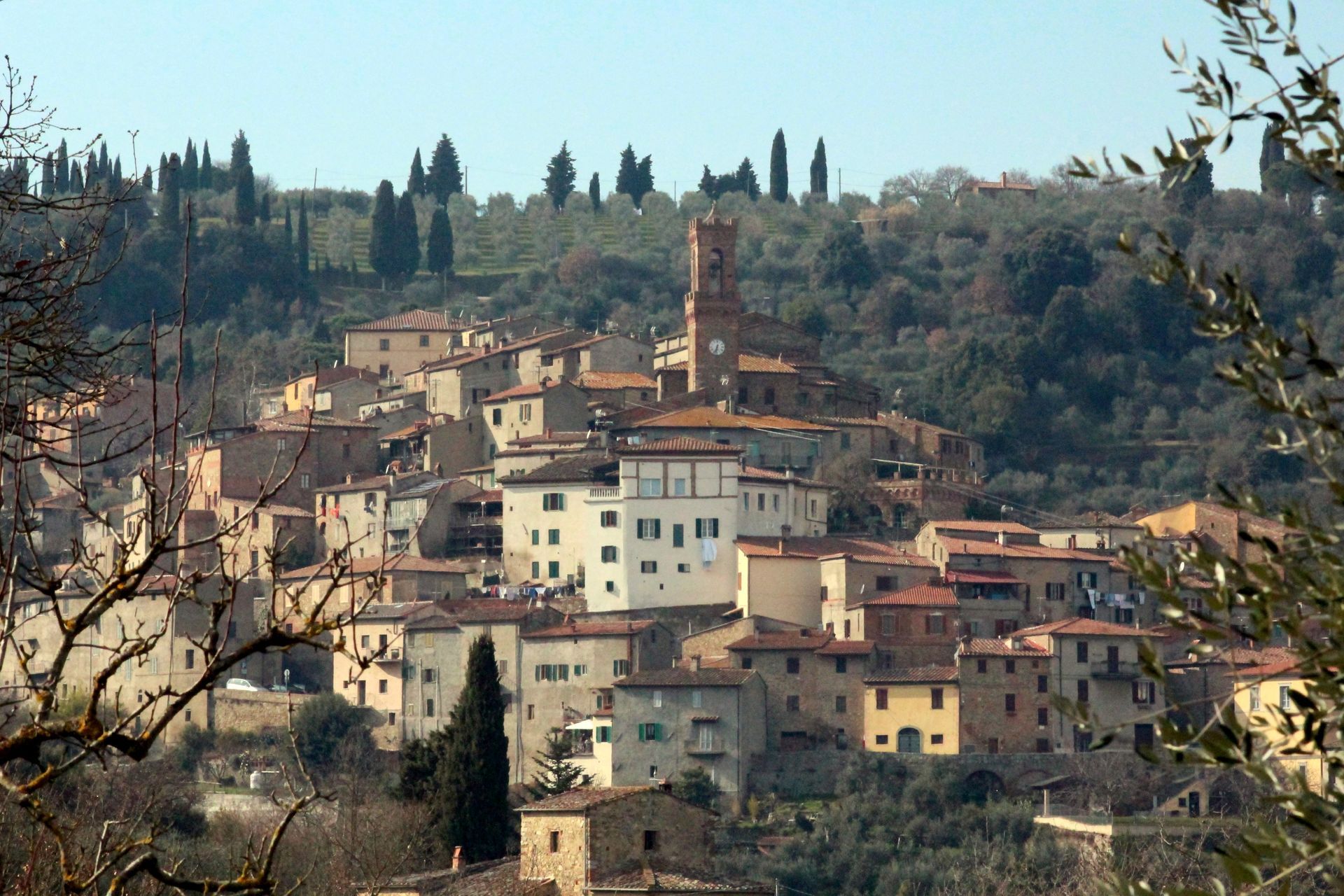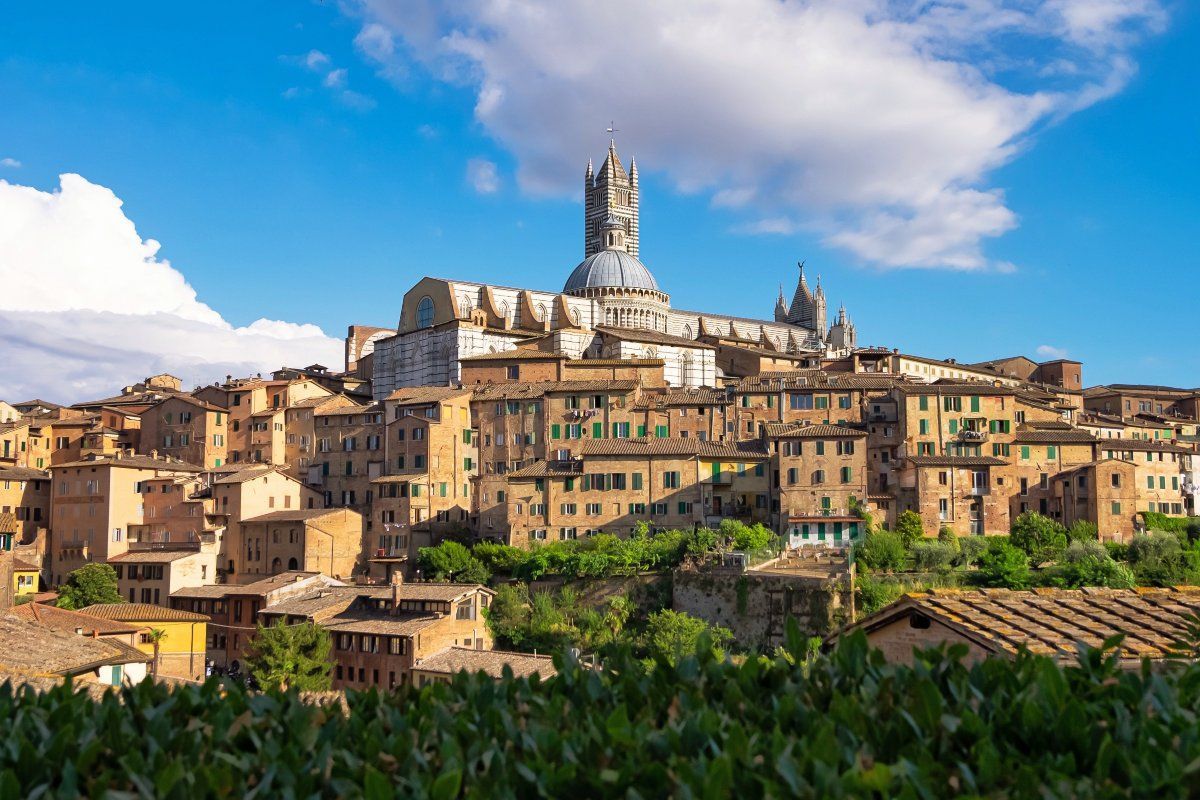The Palio is the most important event organized in the city of Siena and takes place every year on July 2nd and August 16th. In the Palio, the various Sienese Contrade, or rather the "zones" into which the city is divided, challenge each other in a passionate horse race in Piazza del Campo.
Siena is currently divided into 17 districts: Aquila, Bruco, Chiocciola, Civetta, Drago, Giraffa, Istrice, Leocorno, Lupa, Nicchio, Oca, Onda, Pantera, Selva, Tartuca, Torre, Valdimontone.
Each Contrada is distinguished by a unique coat of arms and colors and occupies a specific area of the city. Walking through the streets of Siena you can easily understand which Contrada you are in, by observing the flags and coats of arms displayed along the streets.
The Palio race has very remote origins, in fact there are reports of palios with horses in Siena at least since the seventeenth century.
The party
The Palio is a rather complex event, which over the course of history has been enriched with many rules, customs and practices, many of which are known only to the citizens of the contrada.
Below we report some of the main rules and customs of the Palio, which will certainly be useful for you to better understand the event.
The Palio race, also known as the "career", is held every year on July 2nd (Palio di Provenzano, in honor of the Madonna of Provenzano) and on August 16th (Palio dell'Assunta, in honor of the Assumption of Mary).
On the occasion of the Palio, the main square of Siena, Piazza del Campo, is equipped for the race and the ring on which the race will take place is covered with tuff.
10 Contrade out of 17 participate in each career: seven are those that did not run the previous year in that Palio, while three other Contrade are instead drawn by lot.
The days of the Palio are actually four in the fourth the competition is run. The "Tratta" takes place on the first day of the Palio, i.e. the drawing of lots and the assignment of the horses to the various Contrade.
The historical parade before the race © Migel / Shutterstock.com
Before the official race, 6 tests are carried out, one in the morning and one in the late evening. The fifth trial, which takes place the evening before the official Palio, is called the "general trial", while the last, which takes place the same morning, is called the "provaccia", due to the lack of effort that the jockeys put into it, with the intention not to strain their horses. Jockeys always ride bareback horses, i.e. without saddles.
The prize of the Palio is the so-called "Drappellone", or a canvas designed each time by a different artist, which the winning Contrada will exhibit in its museum.
Palio Day
On the day of the Palio race, the city is in full swing and the whole day is dedicated to the event.
Around 8 o'clock in the Chapel next to the Town Hall, the "Mass of the jockey" is celebrated by the Archbishop. Immediately afterwards, the last test run, the "provaccia", takes place in Piazza del Campo. At 10.30 in the Palazzo Comunale, in the presence of the Mayor, the "marking of the jockeys" is carried out, who from this moment on can no longer be replaced.
The preparation of the Piazza del Campo before the Palio / Shutterstock.com
Around 3 pm in each Contrada the blessing of one's horse takes place and then the great historical procession begins, made up of over 600 participants.
The procession arrives in Piazza del Campo around 5pm (to end up at the authorities' box around 6.30-7pm) and then a bang of firecrackers announces the exit of the horses from the Entrone. At the exit each jockey is given a sinew of ox, with which he can incite his own horse or annoy his opponents in the race.
The race
The race starts from the "Mossa", an area of the square outlined by two canapi (ropes). The "Mossiere" has the task of calling the Contrade, according to the order that has been drawn, and checking that the assigned positions are respected. The first nine Contradas position themselves between the ropes, as they are called, the tenth instead enters "at a run", effectively establishing the start of the race.
The run © M. Rohana / Shutterstock.com
In the event that the start is not considered valid (for example because the jockeys have not respected their position), a blast of a firecracker will give notice and you will have to start all over again. The "Move" phase can be extremely long and even last until dark. This is understandable if you think that the competition between the Contradas is very strong and seeing an "enemy" Contrada win is by far the worst possible result.
The horses have to go around the square three times, also passing dangerous points, such as the narrow curve of San Martino, where clashes and falls often occur (this is one of the reasons why animal rights activists have been declaring themselves against the Palio for years).
The first horse that reaches the finish line wins, even if "shaken", i.e. without a jockey, and the Drappellone is given to the winning Contrada. At the end of the race, the victorious Contrada members go with the Drappellone to the Church of Provenzano (in the July Palio) or to the Cathedral (in the August Palio) for the "Te Deum" of thanksgiving.
Advice
The Palio certainly represents a unique opportunity to experience all the warmth and passion of the city of Siena. If you have the opportunity to participate in the Palio race, we advise you not to miss it because it will be difficult for you to take part in such an enthralling party again.
Piazza del Campo packed with spectators © Janus Kinase / Wikimedia Commons
It is possible to watch the Palio race free of charge from inside Piazza del Campo, which we suggest you arrive at at least around 4.30 pm (unless you want to find a place at the small columns, i.e. at the edge of the tuff track, which come generally busy until the morning, especially those near the Mossa and Fonte Gaia).
The Gaia fountain in Piazza del Campo / Shutterstock.com
Inside the square you can buy drinks to refresh yourself, but there are no public toilets. We strongly advise you to provide yourself with water and drinks and to bring at least a hat to protect yourself from the sun. Due to the large crowd that will throng in the square and the heat, we advise against bringing small children to attend the Palio in Piazza del Campo.

